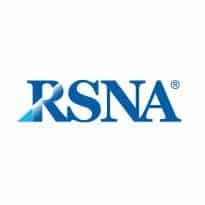Structured reporting could save lives
- 3 December 2013

Structured reporting in radiology could save lives, a meeting at the Radiological Society of North America annual conference heard on Monday.
The claim was made by Curtis Langlotz, professor of radiology at the University of Pennsylvania, in a debate called ‘Is structured reporting the answer?’
Langlotz argued that the unstructured, free-text reports currently used by radiologists could be ambiguous and unclear. As an analogy, he cited an air traffic accident in Tenerife in 1977, which had been caused by a mismatch in the terminology used by a KLM pilot and the terminology used by the control tower.
In the wake of the accident, standard terms had been introduced throughout the industry, and as a result, aviation accidents had reduced dramatically.
Langlotz said structured reporting has certain key features, such as a standard set of headings, a standard set of items listed in a set order and a standard terminology.
“One of the purposes is to communicate to our colleagues in a clear way and to make our reports accessible to software applications,” he said.
Structured reporting also makes it possible to include radiology reports as part of a patient’s electronic medical record, he added.
There is plenty of external pressure to introduce structured reporting, Langlotz explained.
“We have payers who say they will reduce your pay if you don’t mention certain elements. Referring providers want the itemised report. Practice managers are looking for efficiency. Patients are increasingly getting a copy of their report and are sterner judges of errors in reports than even clinicians.”
Langlotz told the conference that a 1989 report found that breast imaging reports were filled with “unintelligible descriptions”.
The subsequent introduction of the American College of Radiology Breast Imaging and Reporting System significantly improved the communication of mammography results, helping both reduce the risk of communication errors and maximise efficiency, he concluded.
In opposition, Richard Gunderman, professor of radiology at Indiana University, argued that some structure is necessary as, “nobody wants to be on the side of chaos”. However, structured reporting also has disadvantages.
“Physicians adapting to new reporting methods cut corners to maintain productivity. The quality of reporting could be reduced with a fill-in-a-blank mentality,” he said.
While there are advantages to structured reporting in some areas, such as breast imaging, in more complex domains, such as the chest and abdomen, it has drawbacks.
“The more complex the domain, the more insight you lose,” Gunderman said.
“If you sit down for eight or 10 hours to fill out a series of checklists it may undermine your curiosity, and your ability to adapt the report to the circumstances of the unique human patient, and may be a threat to the imagination.”
He said the best way to improve the quality of radiology reporting is to improve the education of radiologists.
Contributions from the floor largely took the view that there was room for both approaches.
One attendee said: “we need to make room for more quantitative data, because we have a lot of numbers currently embedded in our reports that are hard for researchers to access later, but there should also be room for interpretation and diagnosis.”
Imaging Informatics editor Kim Thomas is reporting from the Radiological Society of North America annual conference in Chicago, USA, this week. You can contact her on kimthomas@e-health-media.com.




